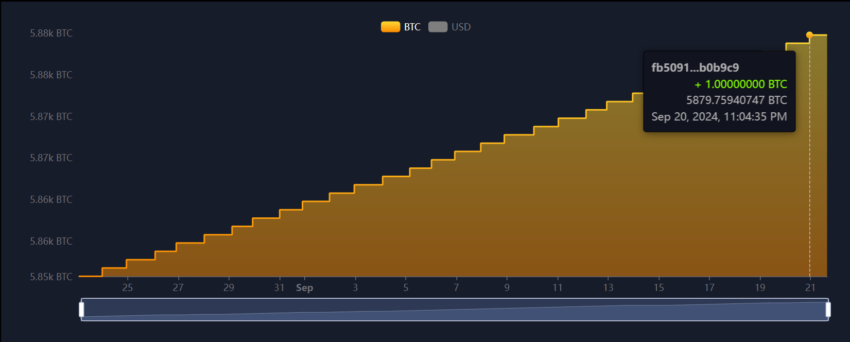
Latin America (LATAM) is becoming a focal point for crypto advancements, with significant regulatory actions and technological innovation shaping the region’s digital industry.
Brazil recently fined X (formerly Twitter) for non-compliance with court orders. Simultaneously, Circle has expanded the availability of its USDC stablecoin through Brazil and Mexico’s national payment systems. Together, these developments illustrate the region’s crypto ecosystem.
Circle Expands USDC into Brazil and Mexico’s Payment Systems
Circle’s USDC stablecoin has made a significant leap in enhancing cross-border payments in Latin America by integrating into Brazil’s Pix and Mexico’s SPEI national payment systems. This integration eliminates the need for traditional international wire transfers, drastically reducing transaction times from days to minutes.
One key advantage of this integration is that users can convert Brazilian Reais (BRL) and Mexican Pesos (MXN) directly into USDC without first converting to USD. This integration allows businesses to save on exchange fees and simplifies the cross-border trade. With Mexico’s $800 billion annual trade with the US and Brazil’s $120 billion in US-related trade, USDC’s local availability will greatly benefit commerce between these countries and the US.
USDC offers even more potential for remittances. Mexico’s remittance flows topped $63 billion in 2023, a 7% increase from 2022. With remittance fees averaging 6.35%, Circle’s stablecoin offers a more cost-effective way to send money across borders.
Read more: What Is a Stablecoin? A Beginner’s Guide
Nubank and Foxbit’s Lightning Network Integration: “Pix with Bitcoin”
Brazil’s financial technology sector is pushing the boundaries of innovation, with Nubank and Foxbit leading the charge by integrating Bitcoin’s Lightning Network. Partnering with Lightspark, these companies are enabling faster fiat transfers via Bitcoin’s layer-2 solution, dubbed “Pix with Bitcoin.” The system allows users to send money using Bitcoin’s Lightning Network as a bridge between traditional fiat and cryptocurrency, offering faster, more efficient transfers.
“[The technology] enables Nubank’s more than 100 million customers to access solutions that make their financial lives simpler and more efficient through Lightning, which is something unique and something that makes us extremely proud,” David Marcus, CEO of Lightspark, commented on the partnership.
The Universal Money Address (UMA) protocol simplifies this process by allowing users to register email addresses or names as their receiving address, making it easy for customers to send payments in both fiat and crypto. Although it’s not exactly the same as Brazil’s Pix system, the Lightning Network’s integration with UMA mirrors Pix’s ease and efficiency.
For now, the service is available through Ripio but plans to expand to other exchanges like Foxbit are already in motion. This integration further shows the growing mainstream adoption of Bitcoin and other cryptocurrencies in Brazil’s financial infrastructure.
Brazil Fines X (Twitter) for Defying Court Orders
Brazil’s regulatory battle with X intensified this week after the country’s Supreme Court fined the platform R$5 million (approximately $1 million) per day for failing to comply with court orders. Local authorities imposed a fine on X for using Content Delivery Network (CDN) servers to bypass a judicial block on the platform. They considered this move a violation of local law.
“There is, therefore, no doubt that the X platform – under the direct command of Elon Musk – once again intends to disrespect the Brazilian Judiciary, as Anatel identified the strategy used to disobey the court order issued in the proceedings, including the suggestion of measures to be adopted to maintain the suspension,” the Supreme Court Minister Alexandre de Moraes stated.
In addition to the daily fines, Brazil’s National Telecommunications Agency (Anatel) reported that X had changed its hosting infrastructure to Cloudflare servers, making it more difficult for regulators to enforce the court-ordered block. The platform’s refusal to comply with the judicial order and appoint a legal representative in Brazil further exacerbated tensions.
BeInCrypto reported that Brazil’s ban on X could have significant consequences. Data from Statista indicates that Brazil ranks sixth among countries with the largest X user base, with 21.48 million users as of April 2024.
Additionally, this decision could impact the country’s crypto community. According to a recent survey by CoinGecko, 34.4% of crypto traders and investors depend on X for their information needs.
El Salvador’s Bitcoin Fund Falls Short of Financial Expectations
El Salvador’s ambitious foray into Bitcoin is facing challenges as the country’s Bitcoin Fund Management Agency (AAB) falls drastically short of its financial targets for 2024. The agency was expected to generate $7.4 million between January and July but reported revenues of only $235. This discrepancy has raised concerns about the sustainability of El Salvador’s Bitcoin strategy.
Despite the underwhelming results, the Salvadoran government has injected more than $11 million into the agency. This amount far surpasses the $700,000 originally allocated. While this funding ensures the agency’s continued operations, critics argue that relying on public funds instead of private investment could hinder El Salvador’s long-term goal of becoming a Bitcoin hub.
Regardless of this development, El Salvador remains consistent with its Dollar-Cost Averaging (DCA) strategy to buy one Bitcoin per day. Data from the Bitcoin Office’s mempool shows that the country holds approximately 5,879 BTC as of September 20.

BRLA Stablecoin Grows in Popularity as Brazil’s Crypto Scene Expands
BRLA Digital, a stablecoin backed by the Brazilian real, is quickly rising as a key player in Brazil’s digital currency space. With over $100 million in transactions since its launch in 2023, BRLA has become the dominant stablecoin pegged to the real, offering businesses and individuals a stable way to transfer funds.
“With this result, we reinforce our commitment to offering a stable and secure solution for transactions in the crypto ecosystem. In addition, companies can make transfers to or from Brazil more easily and conveniently through their accounts,” Leandro Noel, co-founder and COO of BRLA Digital, said.
BRLA’s success is largely attributed to its integration with decentralized exchanges (DEXs) and peer-to-peer platforms, which have enabled wider adoption. The stablecoin’s ability to simplify transfers between Brazilian reais and cryptocurrencies has made it a popular choice in Brazil’s crypto market.
Read more: A Guide to the Best Stablecoins in 2024
As BRLA continues to grow, its founders aim to expand its use further. They plan to ensure it remains a stable and secure option for transactions in Brazil’s dynamic digital economy.
The post LATAM Crypto Roundup: Brazil Fines X, USDC Expands Access in Brazil and Mexico, and More appeared first on BeInCrypto.



:max_bytes(150000):strip_icc()/Bitcoin-7c580bcd389d4aef8f5a7bdb42cd26bb.jpg)

